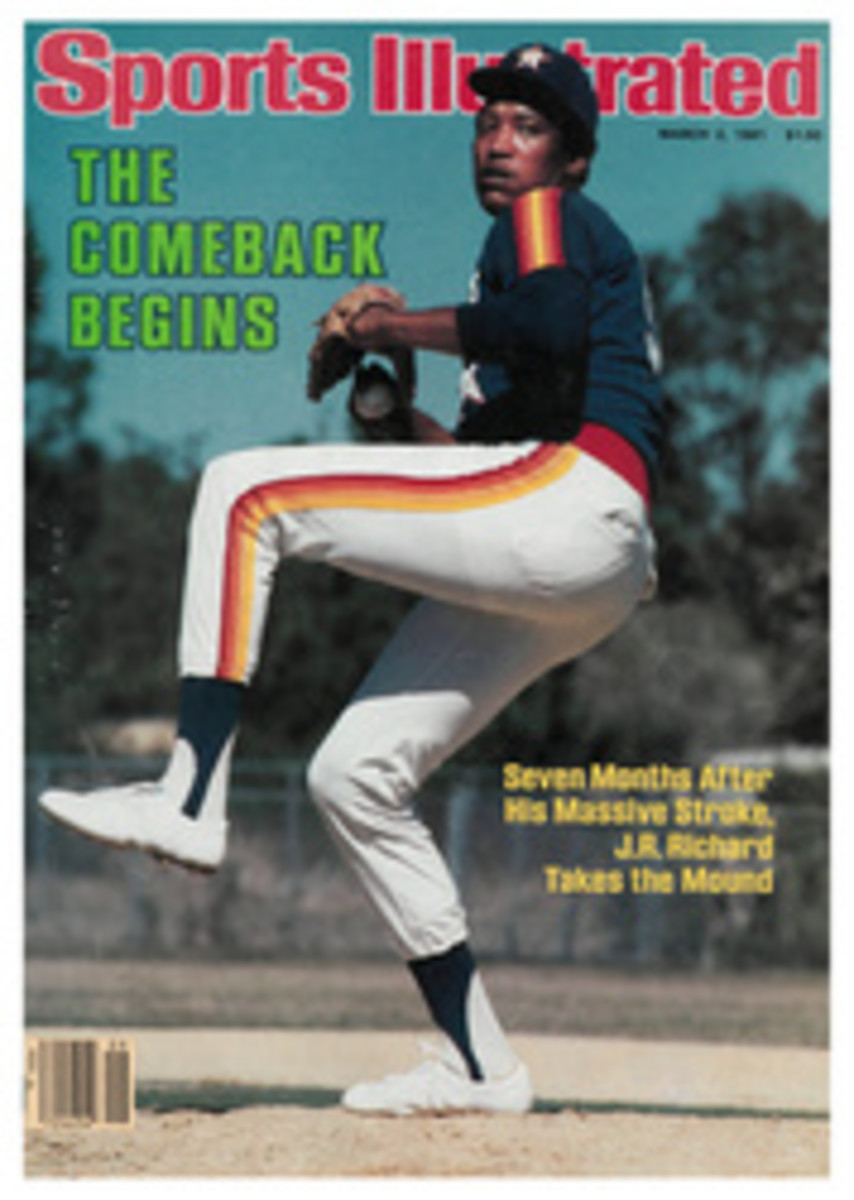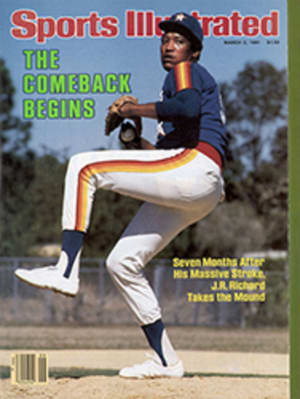
MILLER TIME ON THE RIVIERA
In the city where people talk in terms of Multi-Pik-Paks—Hollywood for multiple motion-picture deals—Johnny Miller strolled 18 holes on a golf course last Sunday and went from a Go Project to a Star Vehicle.
Which is to say that Miller won his second tournament of the still-new year, the Los Angeles Open, and proved himself most definitely back from wherever he was during the winters and summers of his famous slump. Johnny Miller was once a Star Vehicle, but he fell on hard times and for a long while looked more like a supporting player in a series that had been canceled.
Winning the Tucson Open, the year's first tournament, was one thing for Miller, who used to burn up the desert in his glory days. But coming out on top in Los Angeles was a whole different matter, not just because of the way he did it—by guttily fighting off a swarm of pursuers—but also because the L.A. Open featured the strongest field of the year, one that won't be equaled until the Tournament Players Championship in March.
Miller's victory boosted his earnings for the year to $121,548, or $391 more than Bruce Lietzke, the tour's other two-time winner. He did it by starting out in the heat of things, staying there and then out-golfing everybody on Sunday when it counted the most. He had an opening round 66 that left him one stroke off the pace and a 69 on Friday that put him two strokes back. His 67 on Saturday tied him for the lead with Ed Sneed and set the stage for his closing 68 on Sunday, which gave him the victory by two shots over Tom Weiskopf, an old adversary.
"It's a lot more meaningful to win a second time," Miller said afterward. "I hope it's an inspiration to other players."
For all his joy, Miller had difficulty concealing some bitterness over the fact that during his terrible three-year slump he was abandoned by his fans, the press and, perhaps most important of all, clothing and equipment manufacturers. "A lot of people had written me off," he said, "including a lot of companies. I can't forget that."
Miller chooses not to admit that severe shrinkage of the bank account may have had something to do with his comeback, with getting him to work hard on his golf game after success had come so easily and the financial rewards of the mid-70s had tended to make him lazy. And of course this may not have been the case, although in the past he had made statements hinting at it.
No, when golfers win there is always a technical explanation. There has to be; otherwise they can't put their names on instructional articles and books. Miller says he is technically a better player now than he ever was. "I used to hit it straight and go chase it," he said. "Now I can draw it and fade it. I didn't know how to do that before."
If Miller means to say that he won the 1973 U.S. Open and the 1976 British Open when he didn't know how to play golf, it will be surprising news to the USGA, the Royal & Ancient and all the people who watched him win 14 other tournaments during that span. Johnny Miller could play golf like hell, then he couldn't play at all, and now he can play like hell again. To say there is nothing mental behind it is to say that nerves play an unimportant role in the most nerve-edged game of all. Major earthquakes could result from the things pro golfers hold inside of themselves.
In the vast amphitheater, the tumbling valley of eucalyptus trees that is the Riviera Country Club course, Miller went out Sunday in a final pairing with Sneed and Ben Crenshaw, a glamorous group indeed. Crenshaw was a stroke behind the two leaders, and it was tough to find anyone who thought the tournament would be decided elsewhere.
Miller and Crenshaw promptly birdied the 1st hole, but when Crenshaw just as promptly bogeyed the 2nd, Miller suddenly had a two-shot lead on him, a one-shot edge on Sneed and the kind of gassed-up start a golfer likes. Miller came back to the field with a bogey at 4, but lifted his spirits with a 15-foot putt to save a par at the 5th hole.
He was so uplifted, in fact, he birdied the 6th and 7th holes, the 6th by getting a good kick off his iron shot on this funky par-3 with a bunker in the middle of the putting surface. On 7 he simply rammed home a 10-foot putt. By this time Sneed had bogeyed his way out of contention; he would finish with a 75 and 277, tied for 13th.
Miller reached 14 under par—the record-breaking figure he eventually wound up with—and what appeared to be a lock on the $54,000 first prize by staggering in a 40-foot birdie putt at the 14th hole. But he took a bogey at 15 and was in trouble again at 16, where his putter again saved him. He made a 12-footer for his par.
The various other contenders were reaching the clubhouse with totals that would only be good if Miller suffered a seizure. Weiskopf, playing just ahead of Miller, finished with a 68 that put him at 272—12 under par. This became the number Miller had to beat.
Miller knew that on the tee at 18, good old Cardiac Hill, Riviera's famed 454-yard par-4 up a long, steep slope to the clubhouse designed in Early Alhambra. Ahead by one stroke, he pounded his tee shot cruelly to within six-iron range of the green. Modern golf. Oldtimers cling to visions of Ben Hogan jumping at a one-iron or a four-wood to get home on Cardiac Hill.
Needing only a par to win. Miller put his six-iron just off the fringe, only 16 feet from the cup. He may have been trying to lag his next shot; if so, he rapped the putt too hard. It went in for a closing birdie, and the thousands stacked around the green gave Miller the kind of ovation he used to hear so often.
The Los Angeles Open is among the oldest tournaments in professional golf and for years enjoyed the special status of being the first event of each new season. Now it is the final tour event on the West Coast. This year, with the Crosby having been an abbreviated washout, it was the first real test.
The gorgeous weather that prevailed all week and the superb condition of the Riviera course combined to make scoring easy, and this is always like opening floodgates. There are so many talented players on the tour that if the rough is quiet, the greens hold and the putts roll true and not too speedily, the scoreboard bleeds. For example, after three days Jack Nicklaus had shot rounds of 71, 70 and 67, but wasn't gaining any ground on the leaders. After Thursday, he decided he'd better work on his game. He asked his caddie, Angelo Argea, to please remind him of two things: "Before I hit a chip shot, tell me to keep my head down. Before I hit a driver, remind me to take it back low."
At the first tee on Friday, Nicklaus teed up and waggled his club. He looked over at Angelo and said, "Anything you want to tell me, Angie?"
Angelo looked puzzled for a second and then said, "Yeah, hit it straight, Boss."
Nicklaus smiled and settled into a week of coptering up and down the coast to look at land and sitting around the lounge at his hotel to speak of the athletic prowess of his sons. He finished at 278—six under—and tied with Tom Watson for 15th.
The tournament began with more than half the field shooting par or better; 74 of the 144 players came in at 71 or less the first day. For a while, it seemed that half of them would be tied for the lead with a six-under 66, but Gil Morgan, a late starter, put up a 65.
Friday was when Miller Barber emerged as the leader as he trudged off the 18th with a 67 to go along with his 66 of Thursday. His total of 133 put him one stroke ahead of Morgan and two ahead of Miller. Weiskopf shot a 65 that day to creep into contention, but no one gave it much thought.
Miller assumed the lead on Saturday but he had to share it with Sneed, whose 64 equaled the course record. Sneed holed so many putts on Saturday he might have suspected that none would drop on Sunday. He was right.
They did drop for Miller. After Saturday he had said, "I've been on cruise control today. I haven't really been concentrating. Every day's been a surprise for me so far this year. But I have a lot of confidence now. Not as much as I used to have, but I'll be aggressive. Nobody's going to be more aggressive than I am."
And so Miller reached Cardiac Hill needing a par to win and all he did was make a birdie. That ought to be aggressive enough for Hollywood.
PHOTO
PETER READ MILLER
PHOTO
PETER READ MILLER
Barber, who turns 50 on March 31, finished in a tie for third.

